LIST: 7 Animals that Can Only Be Found in the Philippines
Comprised of more than 7,000 islands in the Western Pacific, the Philippines is an archipelago with many places to explore in search of wildlife. With its land and seas teeming with countless endemic species of fauna and flora, the Philippines is a biologist’s dreamland. In fact, it is hailed by researchers as home to the highest concentration of unique species per unit area in the world. After all, most of its plants, amphibians, reptiles, and birds can be found only here in the Philippines. Let’s take a look at seven of these incredible animals.
Tamaraw (Bubalus mindorensis)
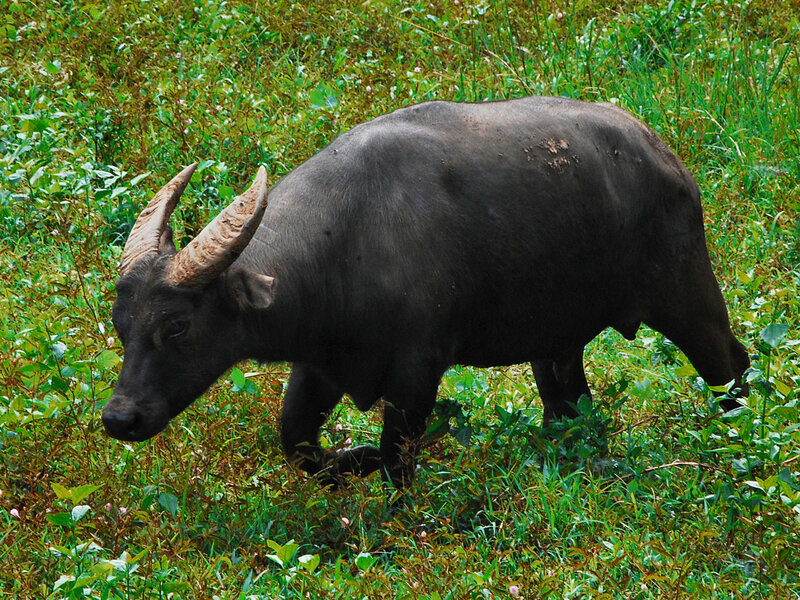 IMAGE from Wikipedia
IMAGE from Wikipedia
The tamaraw is a type of small water buffalo found only on Mindoro. It has shiny black hair, light markings on its face, is not gregarious, shorter, v-shaped horns. and a height no taller than a kindergartener. But don’t let its small stature fool you. This animal has an infamously short temper and will readily charge against intruders.
The International Union for Conservation of Nature considers it to be critically endangered classified and believed that only 600 individuals remain in the wild. Their meat is still prized by some hunters, and diseases from cattle and other livestock have hit their species hard.
Philippine Eagle (Pithecophaga jefferyi)
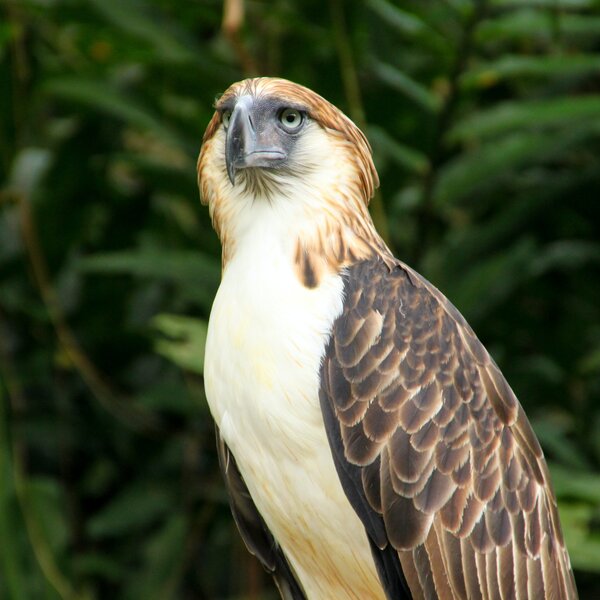 IMAGE from Unsplash
IMAGE from Unsplash
Also known as the monkey-eating eagle, the mighty Philippine eagle is an endangered species of eagle that is endemic in the Philippines. It is also considered the largest of the eagles in the world in terms of length and wing surface, with only Steller’s sea eagle and the harpy eagle being larger in terms of weight and bulk. It is about 90 cm long, brown above and white below, with a crest of long, narrow feathers.
While these avians are difficult to find in the wild, where no more than 400 adult pairs remain, it is still possible to see the species in captivity. Reasons for rescue include trapping and shooting by locals, but the main factor afflicting the species is deforestation. A single breeding pair requires between 10,000 and 27,000 acres for its home range, as well as tall trees for nesting. At the same time, just 35% of the country’s forests remain intact.
Pilandok (Tragulus nigricans)
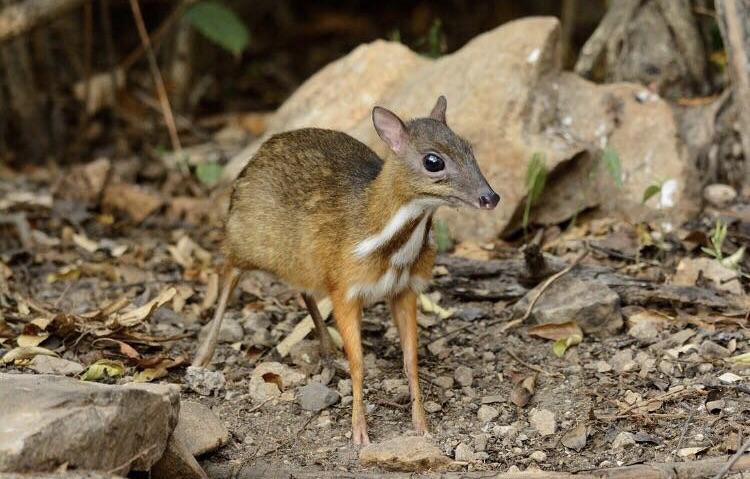 IMAGE from Reddit
IMAGE from Reddit
The Philippine mouse-deer or also known as pilandok is a small, nocturnal ruminant endemic to Balabac, Bugsuk, and Ramos islands southwest of Palawan. Contrary to its name, the Philippine mouse-deer does not belong to the deer family Cervidae, but is a member of the chevrotain family. The male of its species does not have any antlers like a true deer. They use their large, tusk-like canine teeth on the upper jaw for self-defense or territorial fights with other males. On average, it measures 40 to 50 cm from the head to the tail base and reaches an average of 18 cm tall at shoulder height.
Hunting has caused a large decline in the population of the pilandok. The meat is considered a delicacy; its skin is also known to be used to make leather. They are also being sold as part of the illegal wildlife trade. However, the biggest cause of their decline is habitat loss.
Palawan Peacock-Pheasant (Polyplectron emphanum)
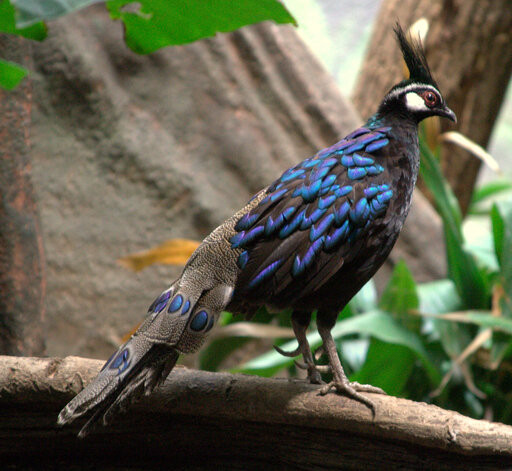 IMAGE from Wikipedia
IMAGE from Wikipedia
A large ground bird of forest on Palawan with a fairly long tail and a crest. This bird has robin-egg blue spots on its tail that resemble eyes and help scare away predators. Males have a black body with blue marks on the wings, a grayish, finely speckled back and tail with blue peacock “eyes,” white marks on the face, and a red eye-ring. Females, on the other hand, have brown plumage with a pale face, although they also have a crest and spotted tail feathers.
This bird subsists on seeds, insects, fruits, and slugs. Breeding pairs are typically monogamous and both parents help rear chicks. Male Palawan peacock pheasants attract females by fanning out their spotted tails in an elaborate, peacock-like courtship display. Their rapid population decline is likely due to habitat loss caused by mining, logging, unregulated hunting, and illegal trapping.
Mindoro Stripe-faced Fruit Bat (Styloctenium mindorensis)
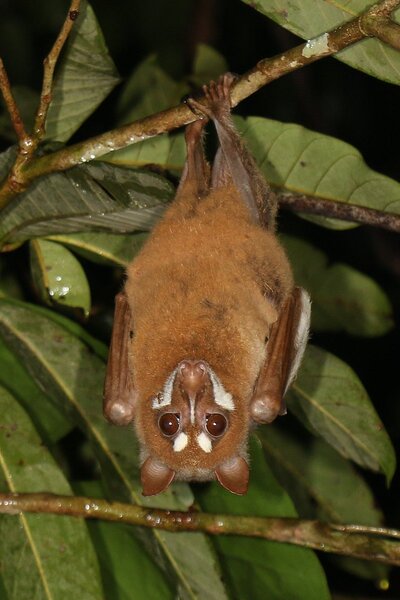 IMAGE from World Bat Sanctuary
IMAGE from World Bat Sanctuary
Known as the “flying fox” for its foxlike face, the Mindoro stripe-faced fruit bat is a species of stripe-faced fruit bat endemic to Mindoro. It is a typical fruit bat, possessing modified forearms for flight, short hind legs, and large ears for use in echolocation. These creatures live as a colony, gathering in trees of lowland forests. They are nocturnal and forage for food at night. They eat the fruits of forest trees and greatly contribute to forest regeneration as pollinators and seed dispersers.
While no population studies have been done so far on their species, it has been suggested that they may be threatened by hunting and habitat loss due to the deforestation of forests. Along with other large pteropodids on the island, the bat is hunted by the locals for food.
Visayan Warty Pig (Sus cebifrons)
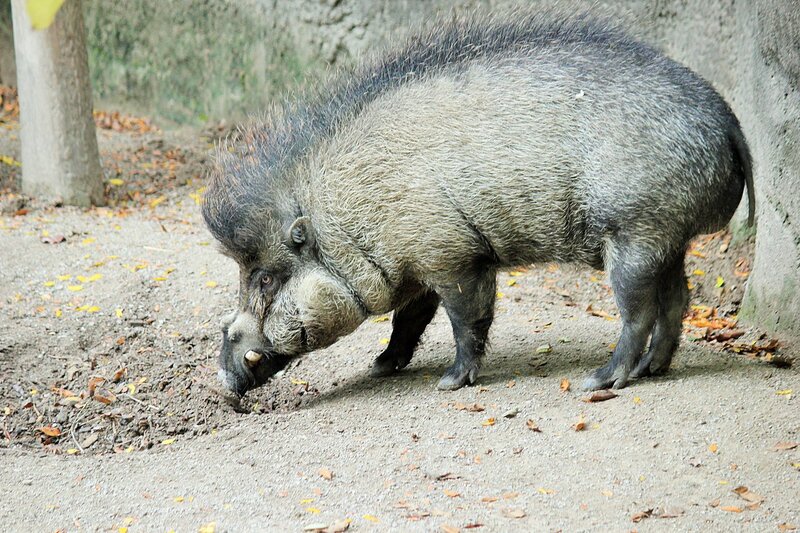 IMAGE from Wikipedia
IMAGE from Wikipedia
The Visayan warty pig is a critically endangered species endemic to Cebu, Negros, Panay, Masbate, Guimaras, and Siquijor. This rare boar receives its name from the three pairs of fleshy facial “warts.” Its sharp hooked tusks are also noticeable and can lacerate anyone that it sees as a threat.
Due to the small numbers of remaining Visayan warty pigs in the wild, little is known of their behaviors or characteristics outside of captivity. The Visayan warty pig is critically endangered due to habitat loss caused by commercial logging and slash-and-burn farming and hunting. They are also hunted for food; and by farmers who see them as pests since they can damage crops when foraging.
Isarog Striped Shrew-Rat (Chrotomys gonzalesi)
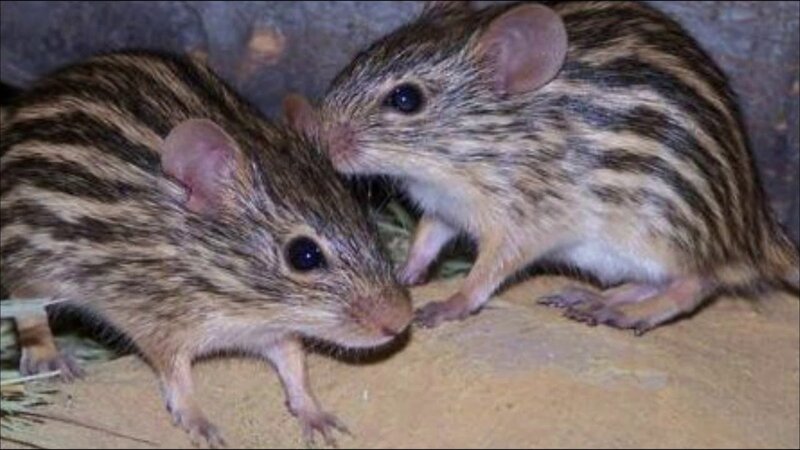 IMAGE from Wikipedia
IMAGE from Wikipedia
Found exclusively on Mt. Isarog in Camarines Sur, the Isarog striped shrew-rat is an earthworm-eating rodent living on moist upland and in mossy forests. They have long snouts, small eyes, and needle-like incisors. They poke their noses through wet leaf litter and moss to locate their food, mostly earthworms, which they dig using their long front claws. This species of striped rat is considered critically endangered due to habitat loss.













